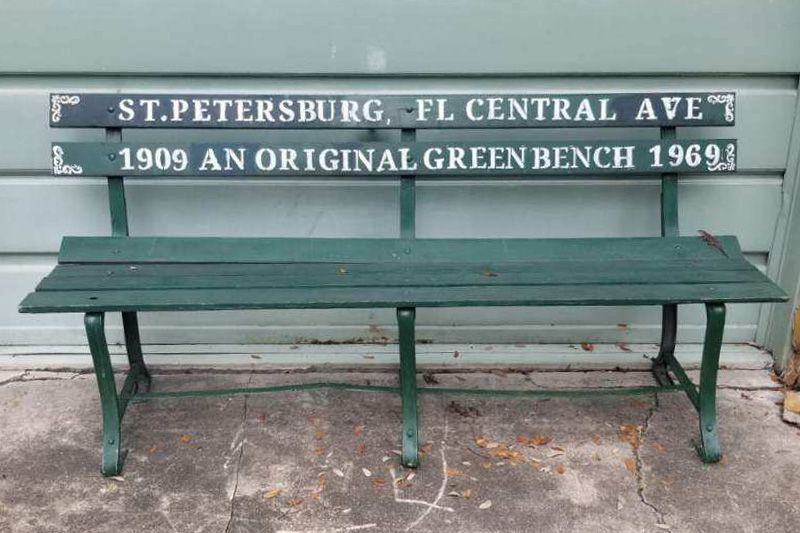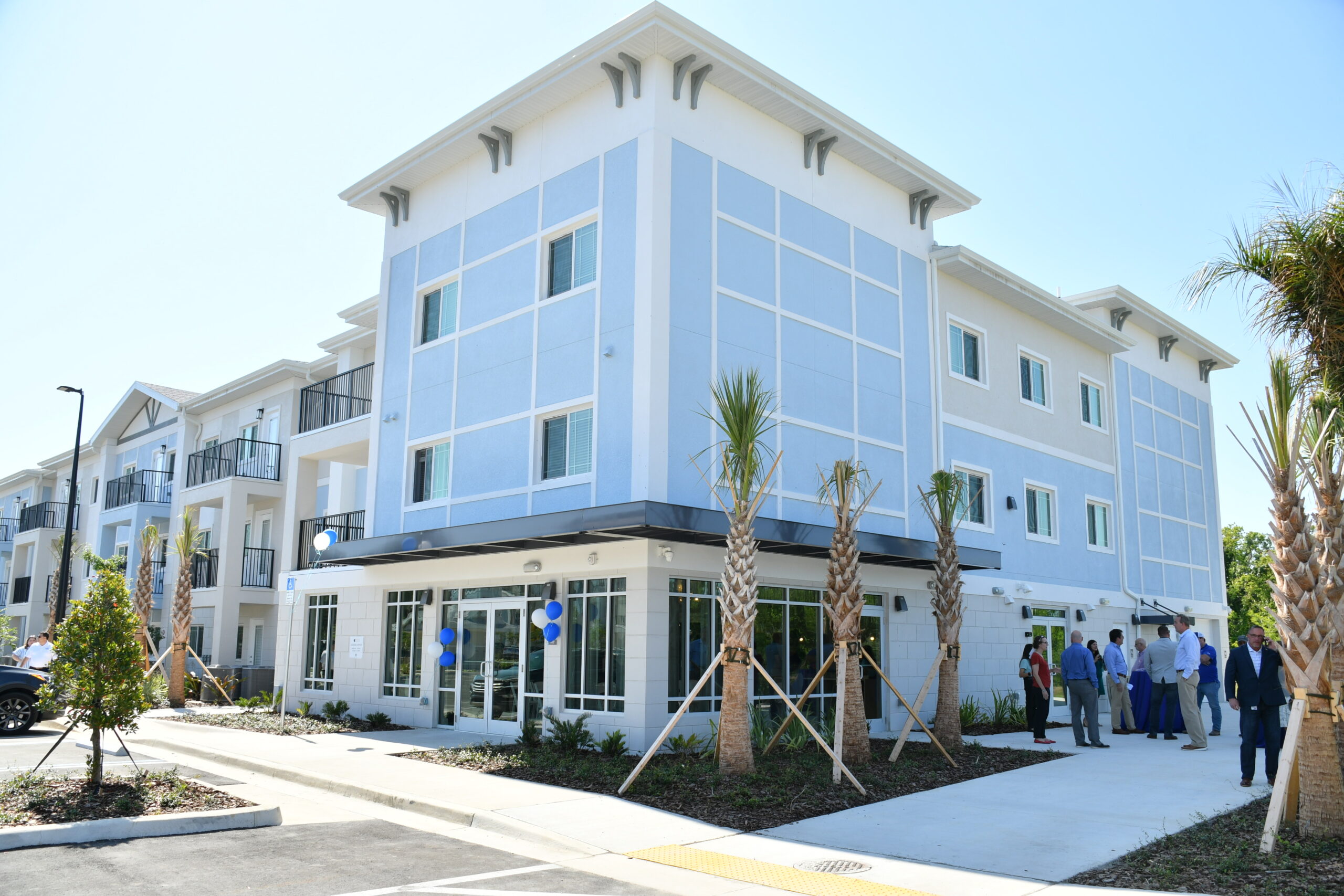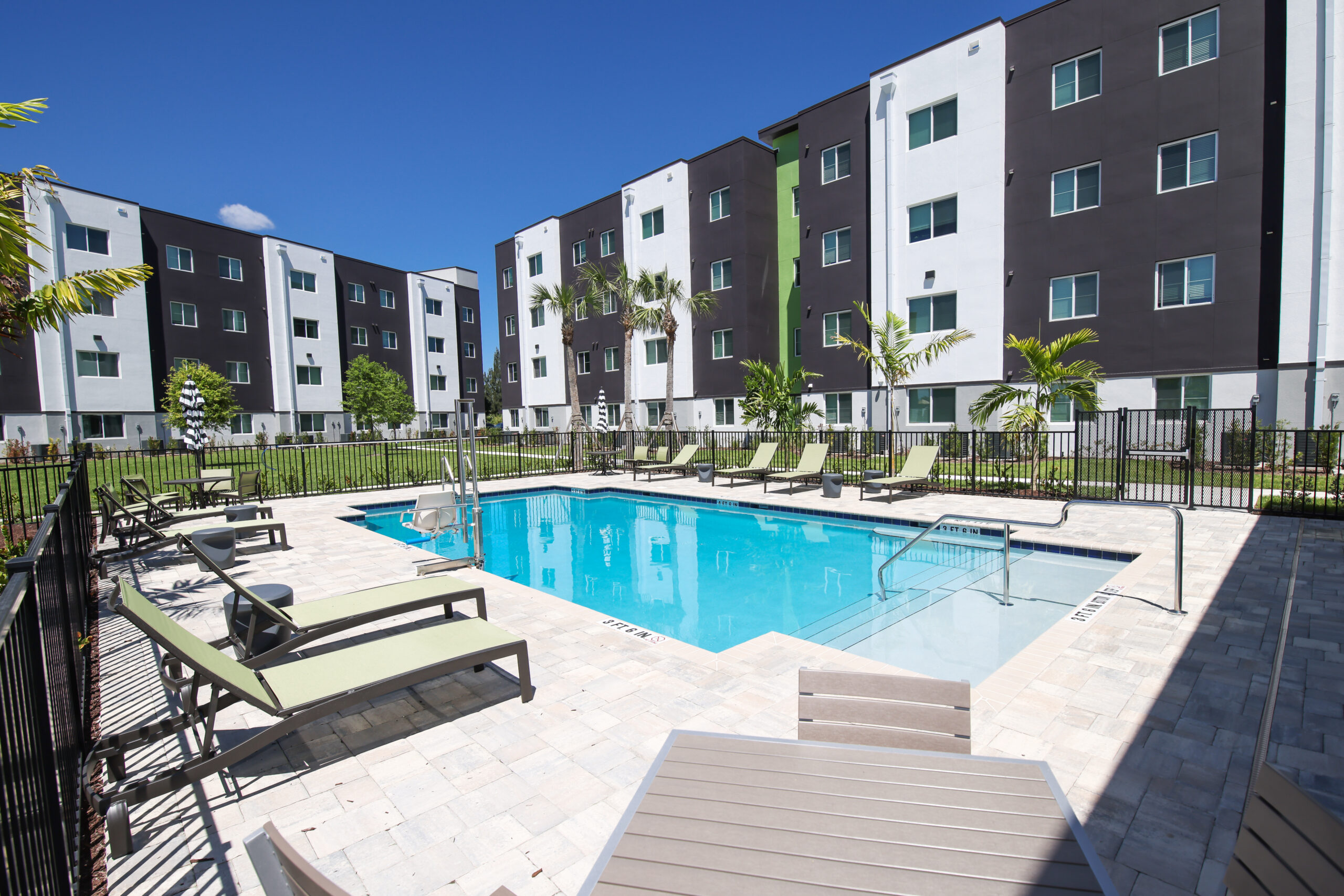The green benches of St. Petersburg, Florida, are an iconic symbol of the city’s history and culture. For many years, these benches served as a meeting place for residents and tourists alike, providing a place to rest, socialize, and enjoy the city’s beautiful surroundings. Yet, they also became another sign of inequality in the Jim Crow south. The story of the green benches is deeply intertwined with the history of St. Petersburg, and it provides a fascinating glimpse into the city’s past.
The beginning of the green benches
The first green benches were installed in St. Petersburg at the turn of the 20th Century. A local realtor added them to the front of his office on Central Avenue as a place for clients to rest. Soon other businesses followed suit. Eventually, under the leadership of Mayor Al Lang, the city set about regulating the color and size of these benches that were popping up all over the downtown area. At the peak of their popularity, green benches in St. Pete numbered in the thousands and gave the city a new nickname — “The City of Green Benches.”
Click here to learn more about the Hidden Histories of Tampa Bay
Over the years, the green benches became much more than just a place to sit. They became a symbol of St. Petersburg’s unique culture and identity. The benches were open to all, in theory, and people of all ages and backgrounds would gather there to chat, read, and watch the world go by. For many residents, the green benches were a second home, a place to meet with friends and neighbors and feel part of a larger community.

Banned from the benches
However, the green benches were established during segregation and were sadly off limits to the African Americans in the city. As were a majority of the downtown assets. Although there weren’t any official laws banning Black residents from sitting on the benches, it was custom that police officers would only permit the white community to use them. There was an exception for Black care-takers who were allowed to use the benches while accompanying white children.
Here is a snippet from an article written by Gwendolyn Reese, a contributor at the Weekly Challenger, explaining her personal memory of the green benches:
Today, whenever the topic of the green benches is raised, it invokes two vastly different sets of memories. One is nostalgic and romantic, full of pleasantries and good feelings. The other is one of injustice, degradation and anger tinged with sadness.
I guess the memories are based on if you were a part of the group allowed to sit on the benches or the group who had to walk by the benches gazing at those who could.
Shaking off an “elderly” image
There never would come a time when Black residents felt were allowed to comfortably and safely sit on a green bench. By the 1960s, the city decided to ban the addition of any more green benches. Over the course of a decade, the benches started to disappear, until by the 1970s when they were all gone.
The benches didn’t dissapear because they were yet another symbol of inequality in the Jim Crow south. They disappeared because the 1960s obsession with “youth culture.” Around this time, St. Petersburg received another, less flattering, nickname of “God’s Waiting Room.” Wanting to stop the association of St. Petersburg with retirees, the city decided to get rid of the benches that allowed elderly residents a place to sit and present the city as, well, a waiting room.

The legacy of the green benches
It’s clear that the deep green benches of St. Pete’s past are more than meets the eye. For some, they are a symbol of the City’s sunny beginnings as a tourist destination. For others, they are an unpleasant memory of a public amenity denied to those deemed less important. Some people still have green benches near their stores or near their private residences. These are ancient artifacts at this point, gotten from public auctions long ago.
However, there is still one quite popular green bench in the area — but it’s in the form of a brewery. Green Bench brewery was the first microbrewery in St. Pete and one of the oldest in the state. On their website, they have written what they feel the name of their brewery means for the St. Pete community:
It is our intent to ring in a new era of the Green Bench, where the original spirit and purpose of the benches is truly available to all. And while we cannot change the past, we believe it is imperative to acknowledge our shortcomings as a society and a community. To not shield ourselves from it; to discuss it and feel it, and together move toward a more unifying future.
Green Bench Brewery
Modern Globe’s Hidden History Series
At Modern Globe, we believe a city’s history is important.
A city’s history gives us insight into the future development and growth of the city. A better understanding of the culture and people that live in the city. A way to help us to appreciate and preserve the city’s heritage.
The Hidden History series is about finding the common, everyday places and things we might take for granted in Tampa Bay — and unearthing their unique story.
Comment if you have a Hidden History you think we should cover!




























